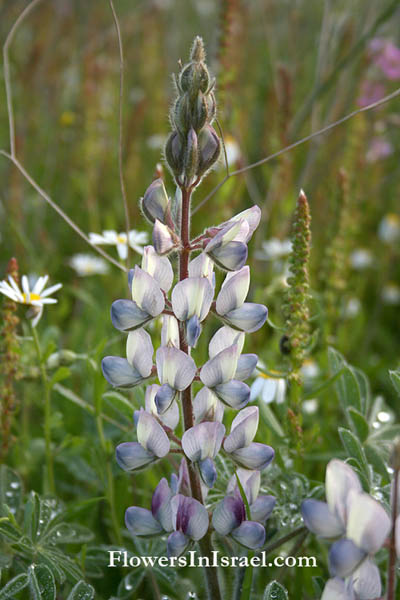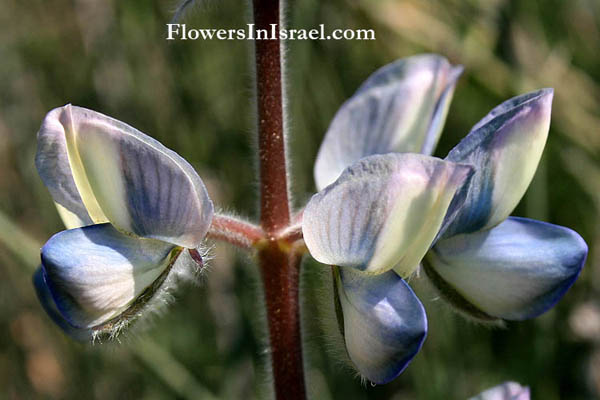Hebrew: תורמוס ארץ-ישראלי, Arabic: الترمس الفلسطيني
| Scientific name: | Lupinus palaestinus Boiss. | |
| Common name: | Palestine Lupine | |
| Hebrew name: | תורמוס ארץ-ישראלי | |
| Arabic name: | الترمس الفلسطيني | |
| Plant Family: | Papilionaceae, פרפרניים |

|
| Life form: | Annual | |
| Stems: | Up to 124cm high (the tallest of the Lupinus plants), always pubescent, sparsely sericeous | |
| Leaves: | Alternate, compound, digitate (shaped like a spread hand) | |
| Inflorescence: | Raceme 26 cm (longest inflorescence) | |
| Flowers: | Light blue, lilach, white | |
| Fruits / Pods: | Legume 70-160 x 10-20 mm, 3 - 6 seeded | |
| Flowering Period: | February, March, April | |
| Habitat: | Sand | |
| Distribution: | The Mediterranean Woodlands and Shrublands | |
| Chorotype: | Mediterranean | |
| Summer shedding: | Ephemeral |

Derivation of the botanical name: Lupinus, Latin lupus, "wolf," alluding to the belief that these plants destroyed the fertility of the soil, which is the oppposite of the truth; the seeds are eaten in eastern Mediterranean countries. palaestinus, from Palestine. The Hebrew name: תורמוס, turmos, from Greek: thermos (= Lupinus albus), which is probably identical with thermos (= warm, hot), which is related to therme (=heat).



|